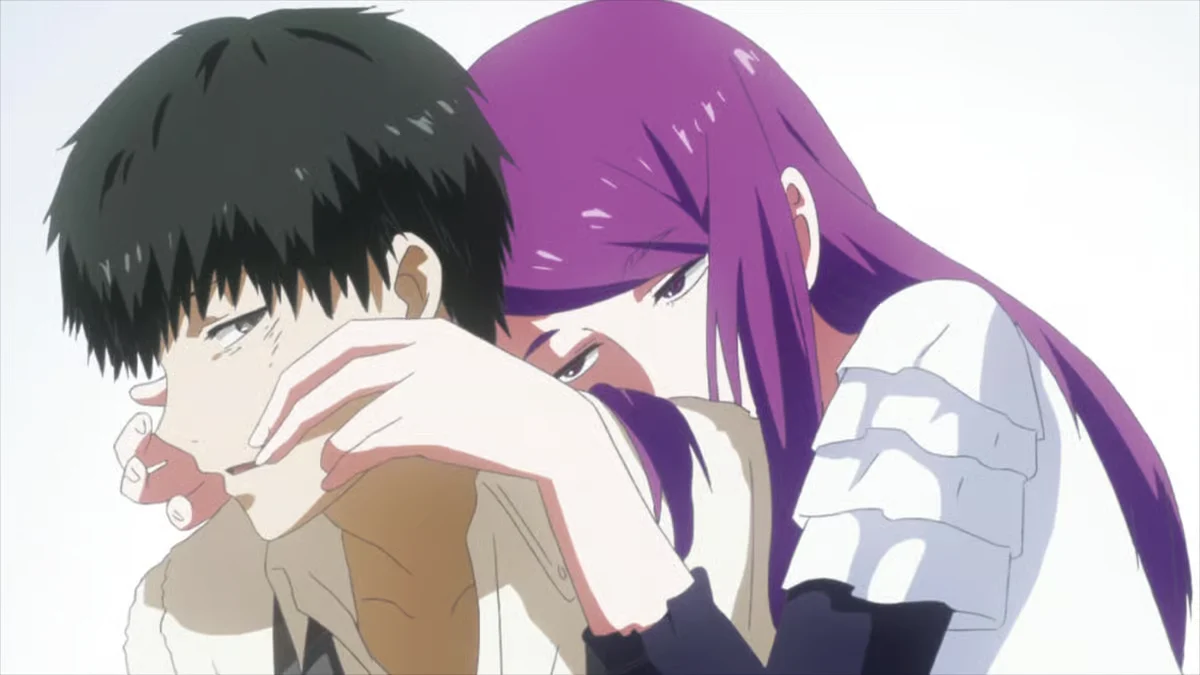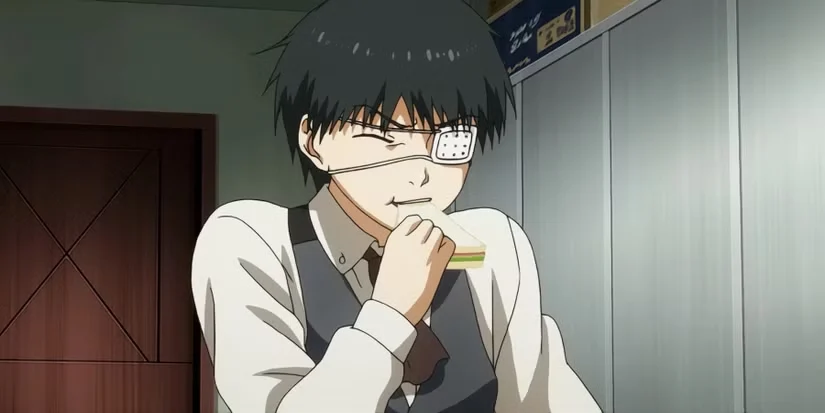
The story of Ken Kaneki is central to ‘Tokyo Ghoul’, showing his transformation from a typical college student into a key player in the war between humans and ghouls. Throughout the series – including ‘Tokyo Ghoul’, ‘Tokyo Ghoul √A’, and ‘Tokyo Ghoul:re’ – Kaneki changes who he is, who he’s loyal to, and how powerful he becomes, ultimately impacting both humans and ghouls. Following his journey is the best way to understand the complex world of the series – including organizations like the CCG, different ghoul groups, and the science of RC cells – and how everything connects to drive the plot.
Kaneki’s story is particularly engaging because the series carefully shows each key moment of his development—from the surgery that alters his body, to the training that improves his fighting skills, and the decisions he makes as a leader that shift the dynamics of power. Following these milestones provides a clear understanding of the series’ central themes—like how to live alongside others, the sacrifices needed to survive, and the unique biology of ghouls—essentially acting as a guide to the story’s main ideas.
One-Eyed Ghoul Origin

After a life-saving surgery performed by Dr. Kanou, Ken Kaneki receives organs from Rize Kamishiro, turning him into a half-ghoul. This surgery gives him a kakuhou, an organ that creates special cells called RC cells, granting him ghoul abilities like a kagune and increased strength. However, it also forces him to eat human flesh to stay alive. Because of the transplant, Kaneki is different from ghouls born naturally, and his unique eye pattern reflects this.
Being half-ghoul gives Kaneki an advantage: he can blend in with humans better than most ghouls, but still use his ghoul abilities. The story uses his unique situation to explore how things like diet, stress, and the amount of RC cells in his body impact his strength, establishing a consistent system for power levels throughout the ‘Tokyo Ghoul’ series.
Rinkaku Kagune and Kakuja Evolution

Kaneki’s primary kagune is a rinkaku, appearing as strong, tail-like tentacles that can quickly heal and deliver powerful attacks. People who wield rinkaku are usually known for their quick, forceful strikes and ability to withstand damage. Kaneki’s tentacles work as both weapons for hitting enemies and tools for grabbing and pulling, allowing him to manage the distance between himself and opponents and move around effectively in close combat while still protecting himself.
Following intense stress and consuming other ghouls, he evolves into a kakuja – a powerful, armored form of the kagune. This new form significantly boosts his defense, attack power, and endurance by spreading special cells throughout his body, allowing him to withstand and deal damage for extended periods. His transformation visually demonstrates how a ghoul’s growth is fueled by both the resources they consume and the trauma they experience.
The Eyepatch Mask and Identity Concealment

Kaneki’s distinctive eyepatch was created by Uta at HySy ArtMask Studio. It’s meant to hide his human side while letting him blend in with ghouls. The mask covers one eye, revealing his ghoul eye, which prevents him from being accidentally identified as human during encounters with the CCG or while involved in the ghoul underworld. The unique, uneven design also gives him the traceable nickname ‘Eyepatch’ in CCG records.
The show uses masks to illustrate their importance in ghoul culture. Masks help ghouls avoid being recognized, hide their relationships, and present a consistent image during dealings with other ghouls. Throughout both seasons of ‘Tokyo Ghoul,’ sightings of Kaneki’s eyepatch are used by the CCG to connect events and build their investigations, all while protecting his secret identity as a human.
Anteiku and Coffee: Human Integration

Being around Anteiku café really opened my eyes to how ghouls and humans *could* live alongside each other. It wasn’t just about survival, but about doing things the right way – finding food ethically, staying out of the public eye to avoid panic, and always helping each other out when things got tough. The café wasn’t just a place to get coffee; it was a central hub, coordinating help for ghouls in need and even trying to calm down conflicts with other groups. For Kaneki, and honestly for me as an observer, it was where he learned to control himself and understand the rules of this hidden community.
The focus on coffee highlights an important aspect of ghoul biology: ghouls struggle to digest regular human food, but coffee’s specific makeup allows them to consume it in small amounts without getting sick. Kaneki’s job at Anteiku helps him keep up appearances and maintain normal human routines—like eating together, chatting, and having a daily schedule—while also adjusting to his new life as a ghoul. This contrast between everyday life and the dangerous world of ghouls is a recurring theme throughout ‘Tokyo Ghoul’.
Torture and Psychological Transformation

Kaneki endures brutal torture at the hands of Yamori (Jason), suffering extensive physical and psychological abuse. This includes horrific experiences like having a live centipede placed in his ear. The story details how this extreme pain, lack of sleep, and constant injury affect his ghoul abilities, changing how he thinks and causing unstable fluctuations in his RC cells. His hair turning white is a visible sign of these deep physical and mental changes.
This time marks a shift in how Kaneki assesses danger and fights. After being tortured, he focuses on quickly disabling opponents and eliminating threats before they become problems, strategies that play to the strengths of his rinkaku kagune. The story uses this change to show how traumatic experiences can lead to both new fighting tactics and physical changes in his kagune – a pattern that’s echoed in his choices throughout the later parts of the series, including ‘Tokyo Ghoul √A’ and ‘Tokyo Ghoul:re’.
Haise Sasaki and the Quinx Squad

Following a major battle that caused him to lose his memories, Kaneki now lives as Haise Sasaki, working for the CCG. As their leader, he trains a special team called the Quinx Squad – humans who have been given artificial ghoul organs to enhance their abilities. Because he understands both ghouls and the CCG, he’s able to create unique training programs and strategies to help these hybrid agents survive encounters with powerful ghouls.
As a big fan of ‘Tokyo Ghoul:re’, I’ve always been fascinated by how realistically it portrays the inner workings of the CCG. The Haise period, in particular, really dives into the day-to-day stuff – building cases, managing all their specialized equipment (quinques), how agents rank up, and how different teams work together. What’s really cool is seeing how Haise’s leadership highlights the difficult choices they face with programs involving ghoul hybrids. It also shows you *how* they make decisions – all the data from autopsies, RC scans, and reports from the field feeds into planning raids and figuring out how to contain the ghouls. It feels very procedural and grounded, which I really appreciate.
Leadership as the One-Eyed King and Goat

Later in the story, Kaneki rises to become the One-Eyed King, uniting different groups with the goal of living together peacefully. He creates an organization called Goat to lessen conflict, establish safe areas, and find ways to avoid all-out war. This title shows he’s a leader by power and action, not by birthright, marking a change from simply trying to survive in secret to building a proper system of rule.
The story of Goat illustrates the challenges of managing resources, sharing information, and keeping ceasefires in place when both sides have a history of seeking revenge. ‘Tokyo Ghoul:re’ shows how these efforts play out in specific areas, revealing how decisions made by leaders – like offering pardons, creating safe evacuation routes, and deciding which targets to focus on – impact the number of incidents and the danger faced by civilians.
Regeneration, Thresholds, and Combat Adaptability

Kaneki, as a rinkaku type ghoul, heals incredibly quickly, letting him withstand injuries that would cripple others. The story shows this through his ability to fight for longer, recover from wounds faster, and continue using his powerful kakuja form as long as he has enough energy. His training focuses on pushing his limits while also knowing when to rest and recover.
He combines his ability to heal quickly with flexible fighting strategies: he can control a wide area with many tendrils, or focus all his power on a single, precise attack. He also quickly adapts by creating restraints and using his surroundings to gain speed. Throughout the ‘Tokyo Ghoul’ series, it’s clear that understanding his opponent – recognizing their weapon type, finding weaknesses in their gear, and managing his own energy – is more important than just having brute strength.
Core Relationships: Hide and Touka

As a huge fan, one of the things I really loved about *Tokyo Ghoul* is the relationship between Kaneki and Hide. Hide is like Kaneki’s anchor to his old life, always there and surprisingly perceptive. Even after Kaneki changes, Hide notices things are off and figures out a lot about what’s happening just by watching him and doing a little digging. It’s amazing how their pre-existing trust manages to hold strong, even with all the secrets and as they end up on different paths. It really highlights the power of their friendship.
Touka Kirishima and Kaneki’s relationship evolves from a teacher-student connection at Anteiku into a strong partnership, especially when working to recover after major battles. In the ‘Tokyo Ghoul:re’ storyline, they get married and have a daughter named Ichika, demonstrating their dedication to both each other and to creating a more stable community. These personal events are connected to larger changes within the ghoul districts, highlighting how individual choices can affect the wider political landscape.
Literary Motifs and Reading Habits

Before becoming a ghoul, Kaneki was a book lover, and the series frequently uses ideas from literature to explore his thoughts and decisions. References to works like Kafka’s ‘The Metamorphosis’ and the writings of the author Takatsuki Sen (who is secretly a ghoul herself) highlight his struggles with who he is and what it means to be human. The story uses these literary connections to show how characters justify their actions when faced with difficult circumstances.
The repeated use of the centipede, references to children’s stories, and memorable quotes aren’t just decorative—they help us track Kaneki’s emotional journey and hint at what’s to come. Throughout both ‘Tokyo Ghoul’ and ‘Tokyo Ghoul:re’, Kaneki’s love of reading serves as a way to reveal important information, explore moral dilemmas, highlight changing themes, and connect plot twists to bigger ideas about transformation and identity.
Tell us your most memorable moment or favorite detail from any of the ‘Tokyo Ghoul’ series – that includes ‘Tokyo Ghoul’, ‘Tokyo Ghoul √A’, and ‘Tokyo Ghoul:re’! Share in the comments below.
Read More
- Gold Rate Forecast
- Bitcoin’s Ballet: Will the Bull Pirouette or Stumble? 💃🐂
- SentinelOne’s Sisyphean Siege: A Study in Cybersecurity Hubris
- LINK’s Tumble: A Tale of Woe, Wraiths, and Wrapped Assets 🌉💸
- Dogecoin’s Big Yawn: Musk’s X Money Launch Leaves Market Unimpressed 🐕💸
- Binance’s $5M Bounty: Snitch or Be Scammed! 😈💰
- Can the Stock Market Defy Logic and Achieve a Third Consecutive 20% Gain?
- Ethereum’s $3K Tango: Whales, Wails, and Wallet Woes 😱💸
- Navitas: A Director’s Exit and the Market’s Musing
- VUG vs. VOOG: A Kafkaesque Dilemma in Growth ETFs
2025-10-11 22:51